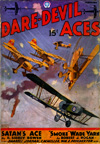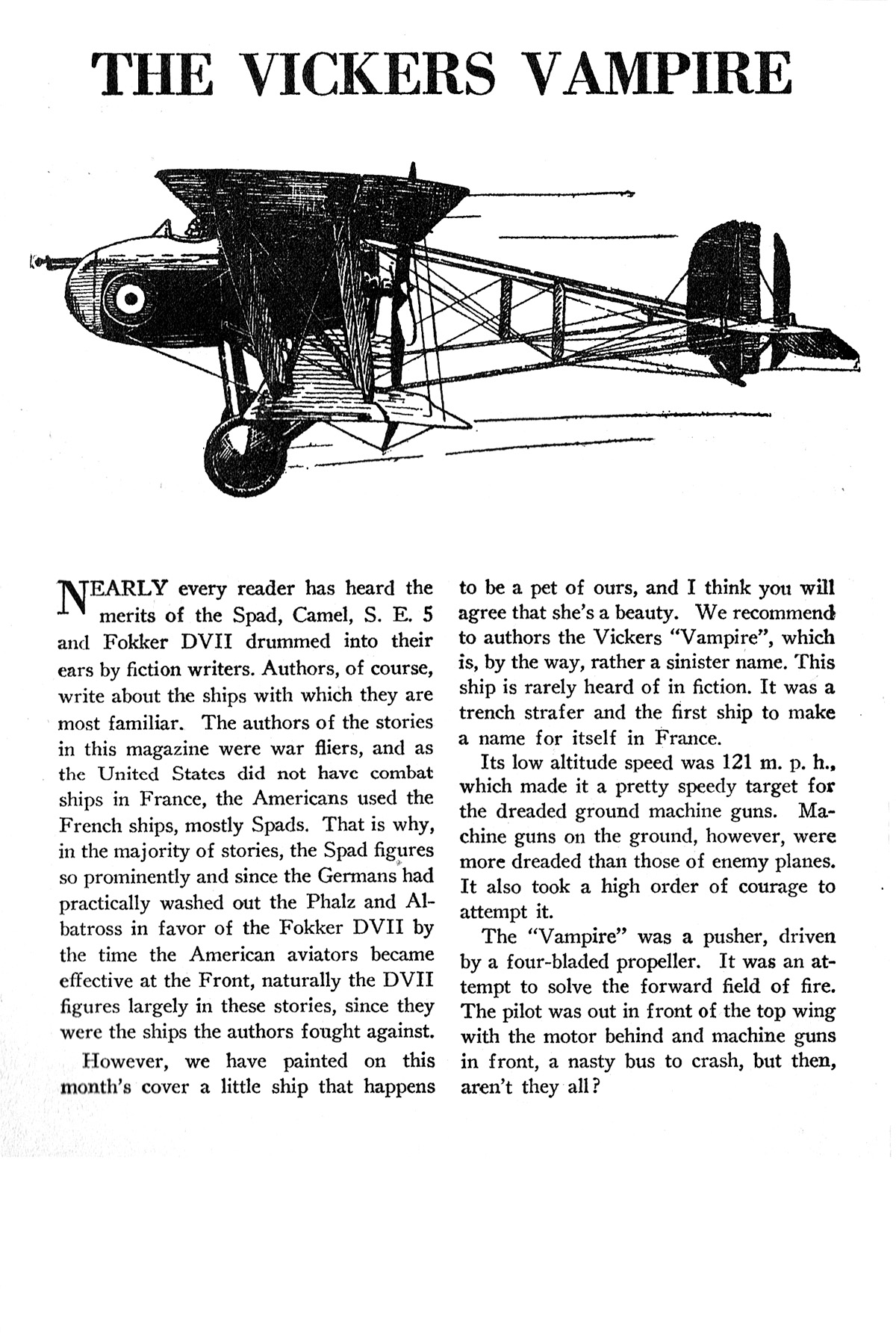My Most Thrilling Sky Fight: Captain Ernst Mathy
Amidst all the great pulp thrills and features in Sky Fighters, they ran a true story feature collected by Ace Williams wherein famous War Aces would tell actual true accounts of thrilling moments in their fighting lives! This time we have German Zeppelin Commander Captain Ernst Mathy’s most thrilling sky fight!
Very few stories of 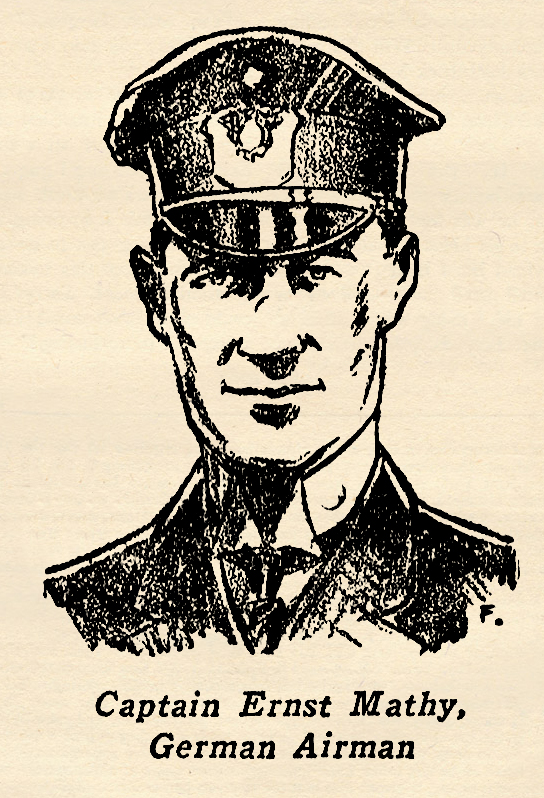 the Zeppelin raiders as told by the raiders themselves have come out of the Great War. Captain Ernst Mathy was one of the most famous of all wartime Zeppelin commanders, having made before he was killed in his final raid over London, six successful night raids over that well protected city, more than any other Zeppelin commander. It was Captain Mathy who developed and perfected most of the strategy of attack for the giant Zeppelins operated by the Imperial
 Flying Corps.
the Zeppelin raiders as told by the raiders themselves have come out of the Great War. Captain Ernst Mathy was one of the most famous of all wartime Zeppelin commanders, having made before he was killed in his final raid over London, six successful night raids over that well protected city, more than any other Zeppelin commander. It was Captain Mathy who developed and perfected most of the strategy of attack for the giant Zeppelins operated by the Imperial
 Flying Corps.
It is not generally known, but it was a fact that there were two divisions of Zeppelin raiders; those operated by the German navy and used for scouting of the British battle fleet on the North Sea, and those operated by the army and used for bombing raids on the capital cities of England and France. The last being, of course, the most spectacular and dangerous duty. Captain Mathy was the ace of aces of all Zeppelin commanders, and despite his army affiliation, his most thrilling fight in the air was with five submarines of the British navy. The story of this strange fight between the monsters of the sea and air as told in Captain Mathy’s own words, follow below.
SINKING A SUBMARINE
by Captain Ernst Mathy • Sky Fighters, January 1935
I HAD taken the L-31 over the North Sea, but was balked in my attempted raid on London by heavy rain and low-hanging storm clouds, so had to turn back. I did not want to return with a full load of bombs and without doing some damage, so I dropped down low and skirted the coast line in a northerly direction, looking for enemy surface craft as possible targets.
Upon coming out of a cloud I was surprised to spy a cluster of five enemy submarines floating on the surface. I circled back into the cloud and descended, coming out again at an altitude of about 2000 feet over the subs. They, of course, saw me then and went into immediate action with their deck guns. One shell put my forward starboard motor out of commission. I ruddered in against the window and dropped lower.
Shells were popping up now like spouting geysers and the subs were moving in ragged circles. I dropped a demolition bomb. It landed a hundred yards from the nearest sub. A shell exploded now in my port gas tanks, ripping the framework on that side to shreds, but happily causing no fire. I got still lower, then dropped another bomb. It missed, also, but only by a few yards.
The submarines began to submerge now and travel away from each other in tangential paths. I immediately loosed another bomb. There was a terrific explosion when it hit a huge fountain of water that hid the diving submarine from my vision temporarily. But when the cataract subsided, I saw the sub nosing slowly downward.
A few minutes later its stern lifted free from the water, a third of the hull exposed. In another minute it sank. Five minutes later it had disappeared completely, leaving nothing but an oily slick on the surface. The other subs by this time had managed to submerge and were rapidly running away. I could not pursue them because my gas balloonets were sieved full of holes and the L-31 was fast losing buoyancy.
I headed for home, just managed to make the German coast when I was forced to land with my badly crippled craft. There I discovered that one shell had missed severing my elevator and rudder controls by a single foot. If that one had been a foot closer, it would have been the submarine which would have been the victor. As it was, the L-31 had another successful mission to its credit.





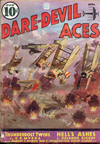
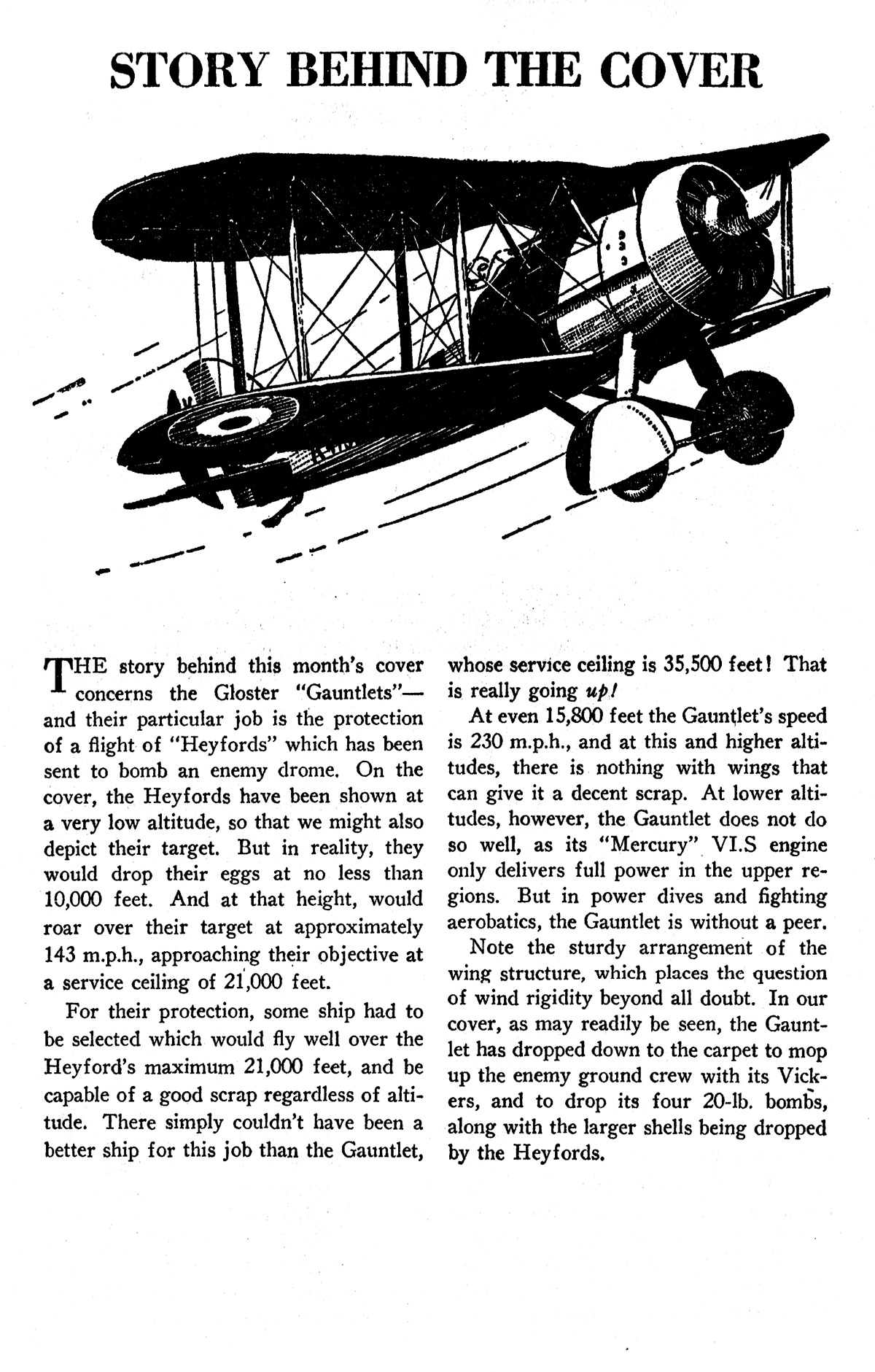
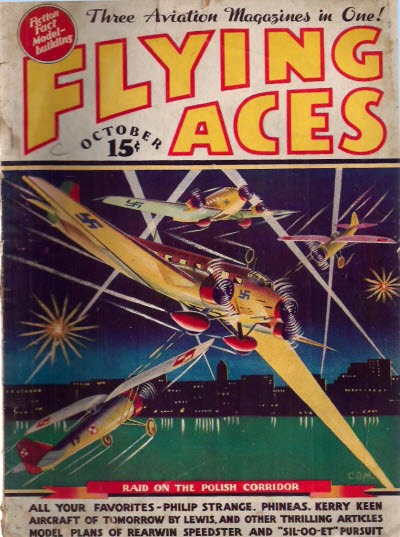 You heard right! That sound can only mean one thing—that Bachelor of Artifice, Knight of Calamity and an alumnus of Doctor Merlin’s Camelot College for Conjurors is back. Yes it’s the marvel from Boonetown, Iowa himself—Lieutenant Phineas Pinkham—and he scores with bounders and grounders!
You heard right! That sound can only mean one thing—that Bachelor of Artifice, Knight of Calamity and an alumnus of Doctor Merlin’s Camelot College for Conjurors is back. Yes it’s the marvel from Boonetown, Iowa himself—Lieutenant Phineas Pinkham—and he scores with bounders and grounders!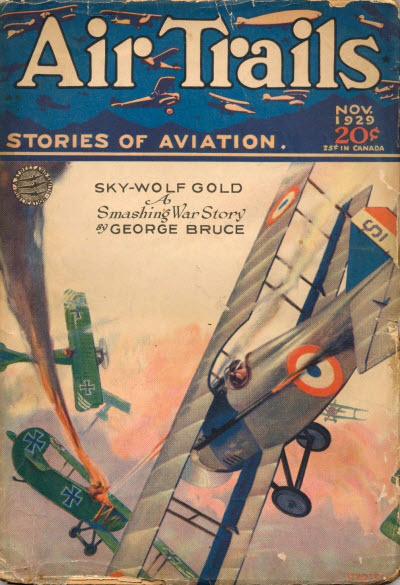 another of
another of 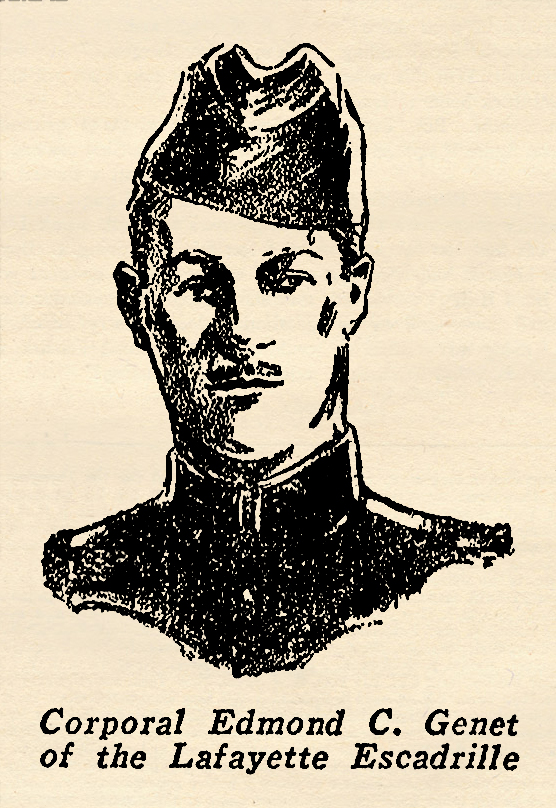 Citizen Genet, who served as the revolutionary ambassador from France during George Washington’s term as president, Edmond C. Genet had a distinguished heritage. Mild-mannered and handsome he was a typical soldier of fortune at heart, possessing an astonishing courage. At 10 he missed an appointment to Annapolis and immediately enlisted in the navy where he participated in the taking of Vera Cruz. A year later he was in battle in Haiti. Later on after the war in Europe broke out, he sailed for France to enlist in the Foreign Legion. He served for some years in the trenches as a simple poilu, then was transferred to aviation and assigned to Escadrille N-124, better known as the Lafayette, where he was the youngest American in a company of famous men. Genet’s flying time on the front was short. He was one of the few airplane pilots to be killed in the air by enemy shrapnel. He was the first American to die in action under the stars and stripes, his death occurring just ten days after America entered the war. The account below is from one of his letters home.
Citizen Genet, who served as the revolutionary ambassador from France during George Washington’s term as president, Edmond C. Genet had a distinguished heritage. Mild-mannered and handsome he was a typical soldier of fortune at heart, possessing an astonishing courage. At 10 he missed an appointment to Annapolis and immediately enlisted in the navy where he participated in the taking of Vera Cruz. A year later he was in battle in Haiti. Later on after the war in Europe broke out, he sailed for France to enlist in the Foreign Legion. He served for some years in the trenches as a simple poilu, then was transferred to aviation and assigned to Escadrille N-124, better known as the Lafayette, where he was the youngest American in a company of famous men. Genet’s flying time on the front was short. He was one of the few airplane pilots to be killed in the air by enemy shrapnel. He was the first American to die in action under the stars and stripes, his death occurring just ten days after America entered the war. The account below is from one of his letters home.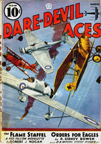
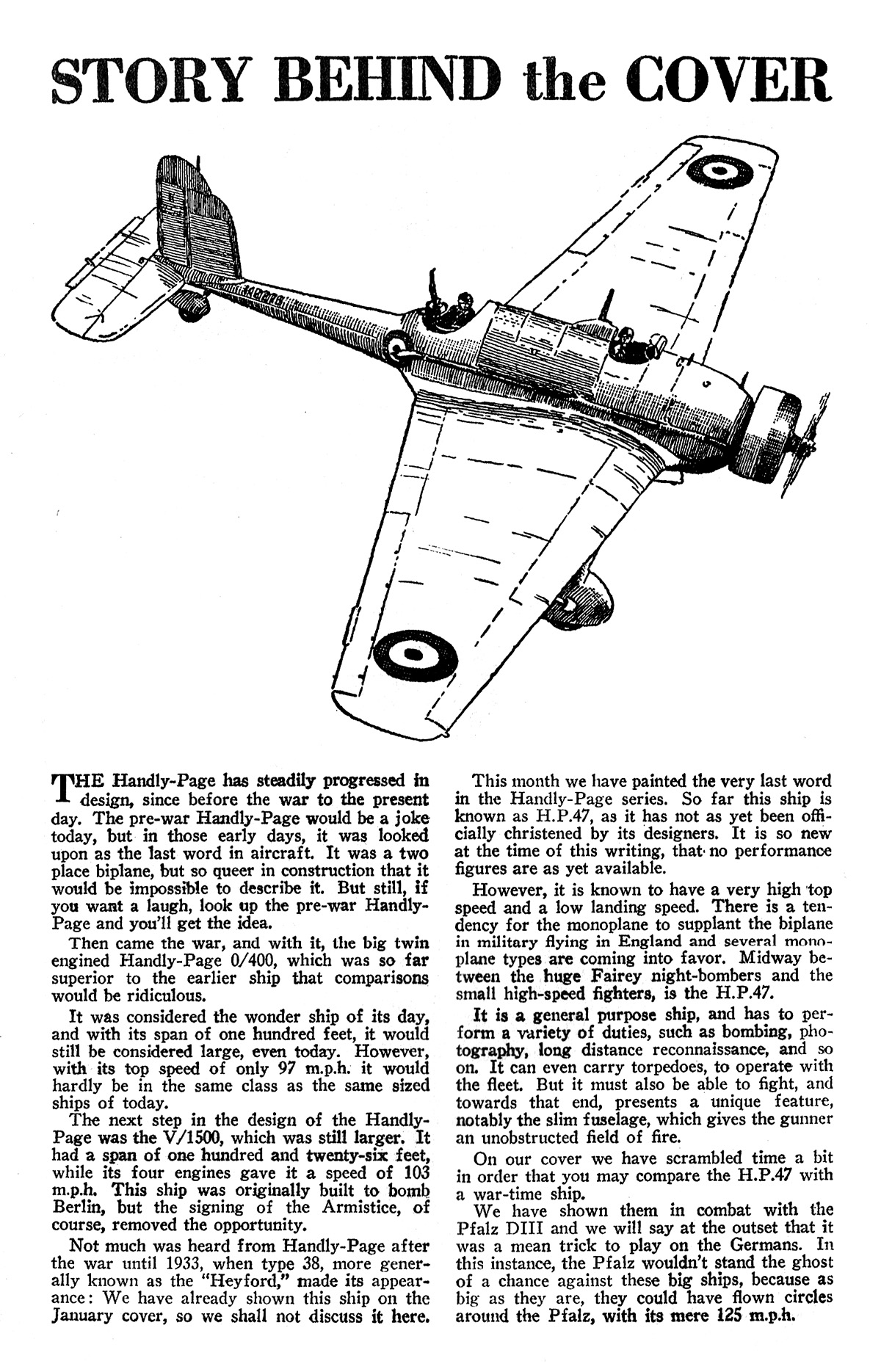
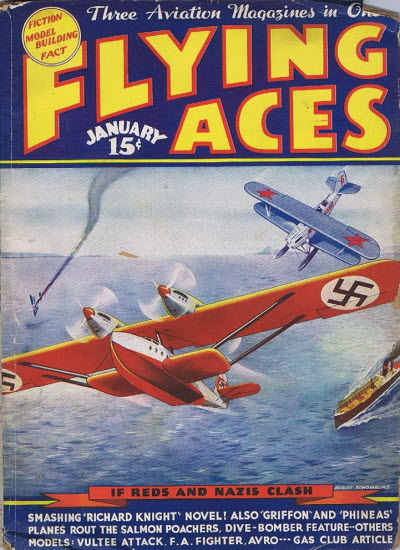 had a story in a majority of the issue of Flying Aces from his first in January 1930 until he returned to the Navy in 1942. Starting in August 1931, they were stories featuring the weird World War I stories of Philip Strange. But in November 1936, he began alternating these with sometime equally weird present day tales of espionage Ace Richard Knight—code name Agent Q. After an accident in the Great War, Knight developed the uncanny ability to see in the dark. Aided by his skirt-chasing partner Larry Doyle, Knights adventures ranged from your basic between the wars espionage to lost valley civilizations and dinosaurs. This, his second tale from January 1937, is more espionage than lost civilizations (like his first).
had a story in a majority of the issue of Flying Aces from his first in January 1930 until he returned to the Navy in 1942. Starting in August 1931, they were stories featuring the weird World War I stories of Philip Strange. But in November 1936, he began alternating these with sometime equally weird present day tales of espionage Ace Richard Knight—code name Agent Q. After an accident in the Great War, Knight developed the uncanny ability to see in the dark. Aided by his skirt-chasing partner Larry Doyle, Knights adventures ranged from your basic between the wars espionage to lost valley civilizations and dinosaurs. This, his second tale from January 1937, is more espionage than lost civilizations (like his first).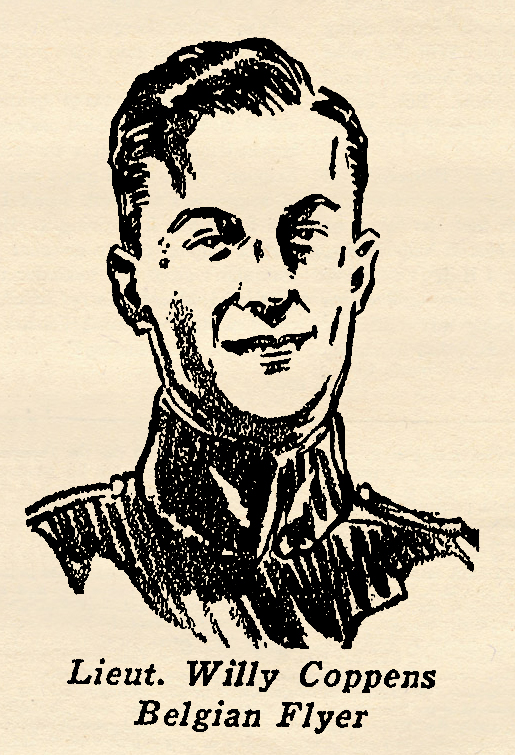 Belgian Ace of Aces. He got his initial training as a soldier and officer in the cavalry division of the army. He transferred later on to the Flying Corps and began immediately to compile the record of victories that gained him top ranking among sky fighters.
Belgian Ace of Aces. He got his initial training as a soldier and officer in the cavalry division of the army. He transferred later on to the Flying Corps and began immediately to compile the record of victories that gained him top ranking among sky fighters.